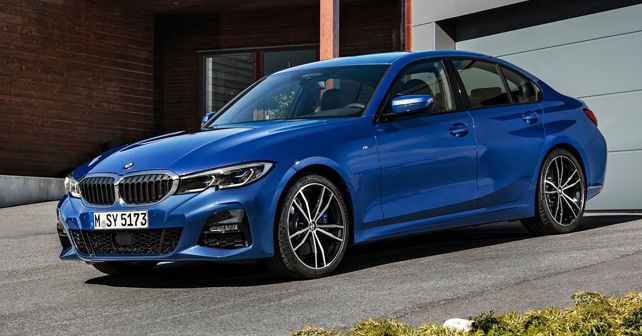Wraps come off the all-new BMW 3 Series at the Paris Motor Show. Highlights include a new lightweight platform, more efficient engines, updated tech and new styling.
Say hello to the all-new BMW 3 Series that has just gone out in public at the Paris Motor Show. The seventh generation model of the saloon takes a significant leap from its predecessor as it features a new lightweight platform, efficient engines, more features and, of course, new styling.
There’s no denying that the 3 Series has been the company’s bread-and-butter model ever since its launch in 1975. BMW says that one in five BMW cars sold worldwide is a 3 Series, which is why they have sold over 15 million units so far. That also explains why this new model matters a lot.
The new 3 Series is based on BMW’s CLAR platform, which also underpins the new X3 and 5 Series. Moving to this architecture has straightaway reduced the weight of the car by up to 55kg, says BMW. Dimension wise, it has grown longer and larger, which was expected. However, the main difference comes in the styling department as unlike other new BMWs, this isn’t just a subtle evolution. The new 3 Series looks significantly sharper and more aggressive than the outgoing model.
The front fascia features a pair of sleeker LED headlamps which are now linked to the kidney grille. The power dome on the bonnet, lowered bumper and larger air intakes give it a hunkered down look. Sure, it looks like a mini 5 Series, but the differences are easily noticeable. The side profile looks tauter and has a strong shoulder line, while the signature Hofmeister Kink is still present. The rear section sees a dramatic change with new upswept L-shaped LED tail lamps. The whole rear section – while neatly done – seems like a hybrid of Audi A4 and Lexus RC F's rear sections.
Inside, BMW has revamped the entire cabin, and that’s understood because the old car’s drab interior had started showing age. The dash design is simple, but you get all the latest tech such as a 12.3-inch digital instrument cluster along with BMW’s latest iDrive 7.0 infotainment with a new 10.3-inch touchscreen. Overall, the interior is a clear step up from the outgoing model.
On the mechanical front, the current engines have been upgraded. The petrol range will start with the 320i, which is powered by a 2.0-litre turbo four-cylinder engine developing 181bhp and 300Nm. The more powerful 330i will have the same engine, producing 255bhp and 400Nm. Both the diesels – 318d and 320d – are powered by a 2.0-litre turbo four-cylinder engines. The former produces 148bhp and 320Nm, whereas the latter is rated at 187bhp and 400Nm. There will be a more performance oriented 330d variant that will join the range later on. This version will get a 3.0-litre six-cylinder turbocharged diesel developing 263bhp and 580Nm of torque. The 318d and 320d come standard with a six-speed manual with eight-speed automatic as optional. The petrol motors come fitted with the eight-speed automatic transmission as standard. All-wheel drive XDrive is optional with the 320d. A
In addition to these, BMW will also bring the 330e plug-in hybrid engine next year, which will likely have the same 2.0-litre four-cylinder petrol engine along with an electric motor. Also in the summer of 2019, BMW plans to turn the heat up by launching the 340i xDrive M Performance version. This will be powered by a 3.0-litre six-cylinder turbo petrol, churning out 369bhp and 500Nm. Now imagine how much firepower will the next M3 pack…
The seventh-gen BMW 3 Series will go on sale in European markets early next year. And since it’s a popular car here in India, we expect it to see it land on our shores shortly after its global market launch.



























Write your Comment